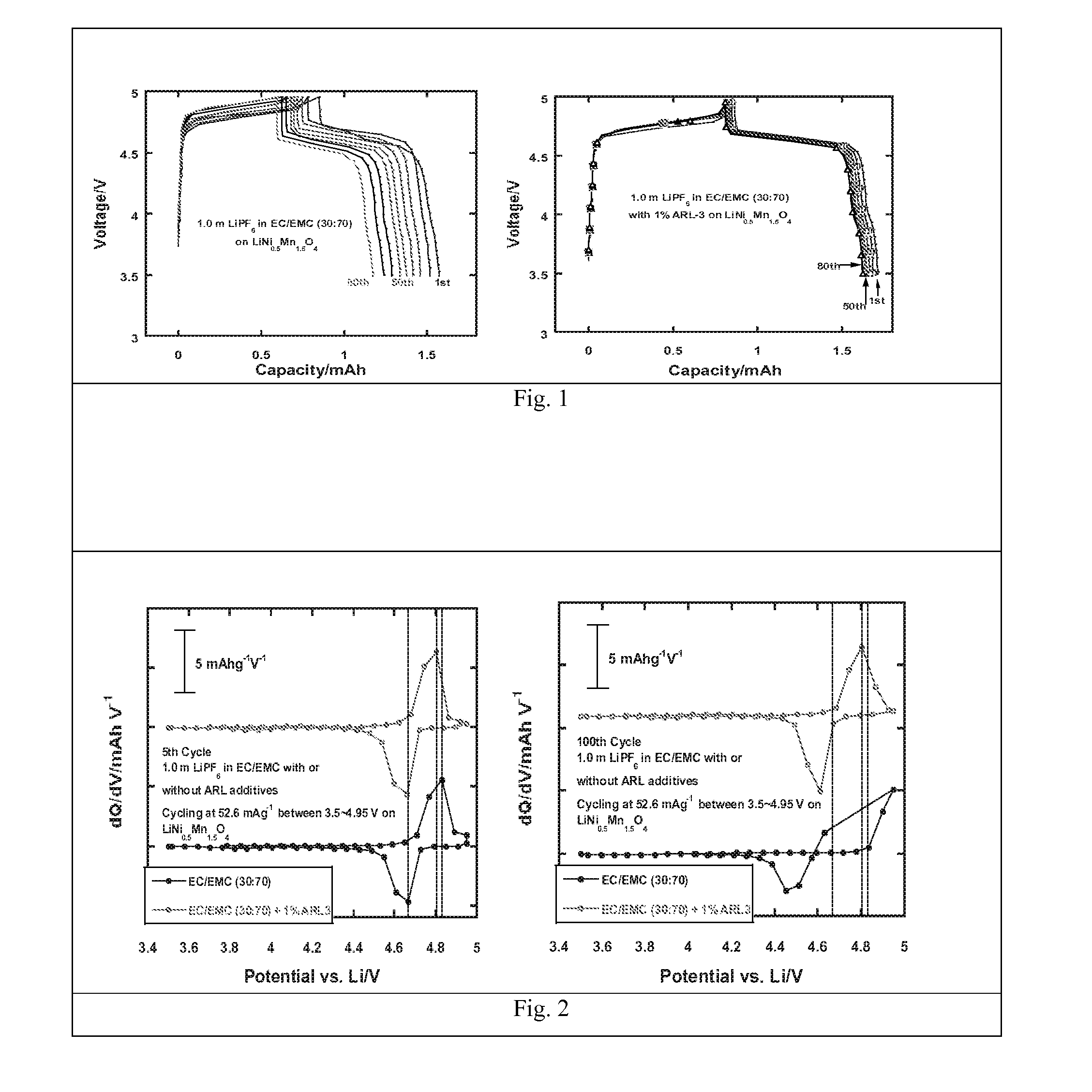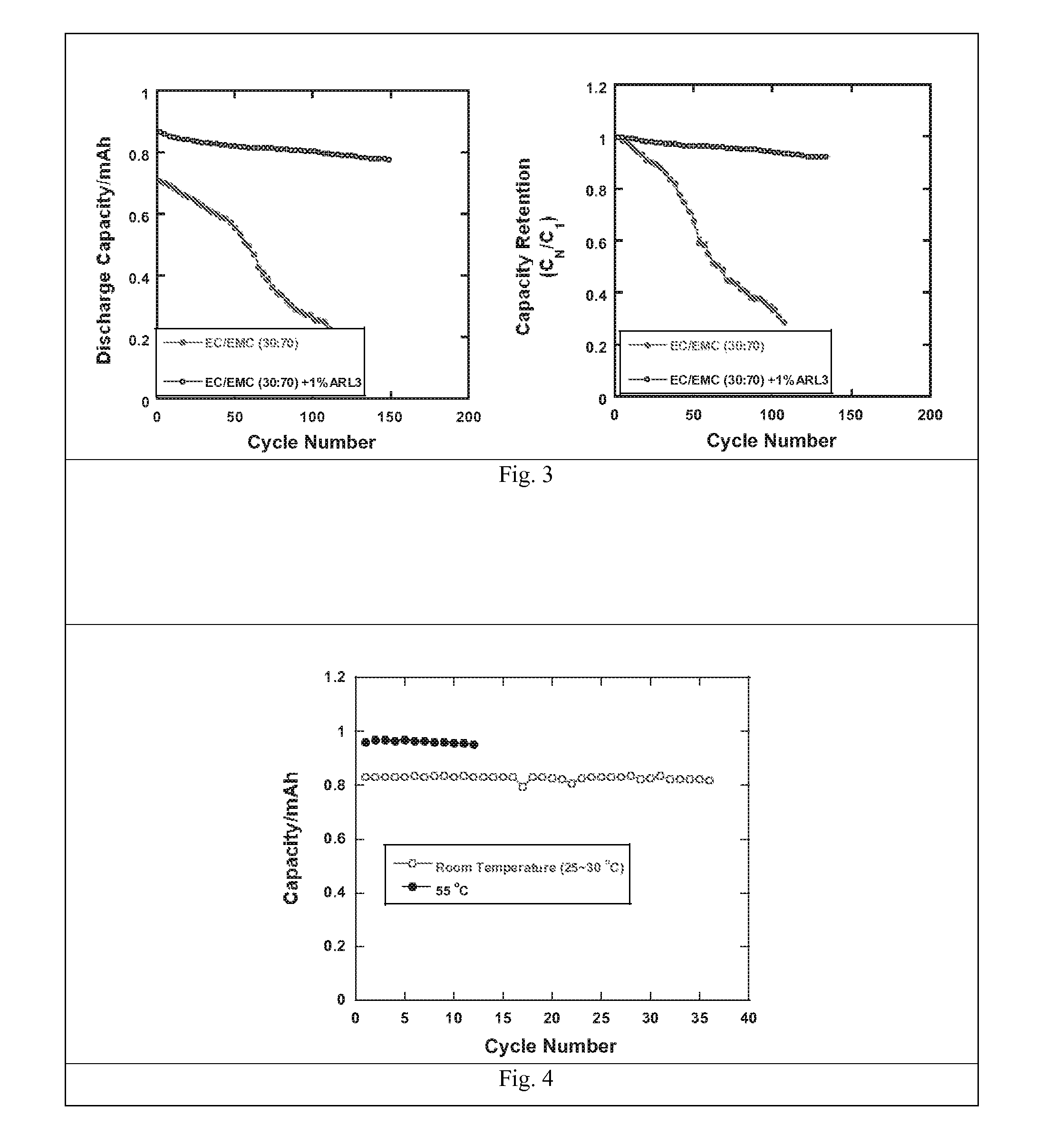Electrolytes in support of 5v li ion chemistry
a technology of li ion chemistry and electrolyte, applied in the field of electrolyte, can solve the problems of slow li, inability to realize high energy density and quality, and limited reversibility of cell chemistry and resultant energy density, and achieve the effect of superior performances
- Summary
- Abstract
- Description
- Claims
- Application Information
AI Technical Summary
Benefits of technology
Problems solved by technology
Method used
Image
Examples
example 1
Synthesis of Tris(1,1,1,3,3,3-hexafluoro-iso-propyl)phosphate (Compound II in Table 2)
[0063]To a flask containing 500 mL of diethyl ether, 175 g of 1,1,1,3,3,3-hexafluoroisopropanol is added and stirred until a complete solution is made. To the stirring solution of diethyl ether and 1,1,1,3,3,3-hexafluoropropanol, 8.28 g of solid lithium hydride is added through a solid-addition funnel and allowed to react at room temperature. After 1 hour, the reaction mixture is chilled to the range of 0-5° C. by immersion in a water / ice bath. Once chilled, 53.21 g of phosphorus oxychloride is carefully added. The reaction is considered complete once no more insoluble lithium chloride is formed during reflux of the reaction mixture. The final product, tris(1,1,1,3,3,3-hexafluoroisopropyl)phosphate, is recovered by distillation after filtering off the precipitation.
example 2
Synthesis of tris(perfluoro-iso-propyl)phosphate (compound 12 in Table 2)
[0064]The synthesis of precursor tris(iso-propyl)phosphate was conducted in a similar manner as described in Example 1. The intermediate phosphate was then subjected to either elemental fluorination or electrochemical fluorination to achieve the perfluorinated product. The final product, tris(perfluoro-iso-propyl)phosphate, is recovered by after purification.
example 3
Synthesis of Tris(1,1,1-trifluoroethyl)phosphate
[0065]The synthesis of 1,1,1-trifluoroethoxide lithium was similar to the procedure as described in Example 1. 53.21 g of phosphorus oxychloride is then carefully added. The reaction is considered complete after refluxing. The final product, tris(1,1,1-trifluoroethyl)phosphate, is recovered by distillation after filtering off the precipitation.
PUM
| Property | Measurement | Unit |
|---|---|---|
| voltages | aaaaa | aaaaa |
| voltages | aaaaa | aaaaa |
| boiling point | aaaaa | aaaaa |
Abstract
Description
Claims
Application Information
 Login to View More
Login to View More - R&D Engineer
- R&D Manager
- IP Professional
- Industry Leading Data Capabilities
- Powerful AI technology
- Patent DNA Extraction
Browse by: Latest US Patents, China's latest patents, Technical Efficacy Thesaurus, Application Domain, Technology Topic, Popular Technical Reports.
© 2024 PatSnap. All rights reserved.Legal|Privacy policy|Modern Slavery Act Transparency Statement|Sitemap|About US| Contact US: help@patsnap.com










